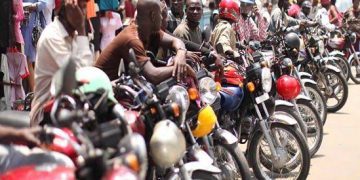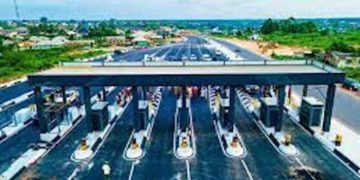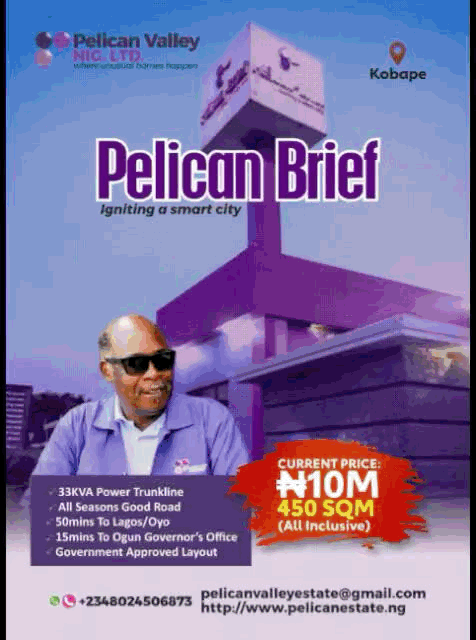By The Daily Crucible
Over 250,000 people, including world leaders – comprising a powerful delegation from Nigeria, the giant of Africa, led by the country’s President of the Senate, Godswill Akpabio, the United States President, Donald Trump and his wife, First Lady Melanie Trump, Ukrainian President Volodymyr Zelensky, reigning monarchs, among others from all walks of life poured into St. Peter’s Square and the adjacent areas on Saturday to bid their final farewell to Pope Francis at his Requiem Mass.
Other world leaders who gathered at the Vatican City to pay their respects at the funeral of Pope Francis, the leader of the Roman Catholic Church, included First Lady of France Brigitte Macron, President of France Emmanuel Macron, King Felipe and Queen Letizia of Spain; who looked on as the coffin leaves St. Peter’s Square during the funeral ceremony.
Also in attendance were former President Joe Biden and his wife, Jill, Prince William – King Charles III’s eldest son, represented his father, who is head of the Anglican church, Michael D. Higgins and Micheál Martin, representing Catholic-majority countries were also in attendance as the Irish President alongside Taoiseach [Prime Minister] Micheál Martin as well as Philippines President, Ferdinand Marcos Jr., who is the head of state for Asia’s largest Catholic population.
Besides, Estonian President Alar Karis,
Javier Milei, the conservative President of Pope Francis’ native Argentina, who travelled down to Rome for the funeral service and the U.N. Secretary-General António Guterres graced the funeral ceremony to pay his respects to late Pontiff.
Also, more than 150,00 others took up positions on the streets of Rome as his coffin was taken in procession to the Basilica of Saint Mary Major.

This came six days after Pope Francis made his final public appearance for Easter.
The Daily Crucible reports that Pope Francis, the 266th Pontiff of the Catholic Church and the first from Latin America, died at the age of 88 following a period of declining health after a severe bout of illness. Sources close to him at his last moment said Pope Francis regretted that he couldn’t perform the “Washing of feet” for the Catholic faithful during the Easter.
His death was officially announced on Easter Monday morning, April 21, in the late Pontiff’s Vatican residence, Casa Santa Marta by Cardinal Kevin Farrell, Camerlengo of the Holy Roman Church. 
The solemn and moving funeral ceremony on Saturday, April 26, was presided over by Cardinal Giovanni Battista Re joined by some 250 Cardinals, Patriarchs, Archbishops, Bishops, priests, and consecrated religious.
Pope Francis was entombed at Rome’s Basilica di Santa Maria Maggiore.
The Daily Crucible reports that Santa Maria Maggiore basilica was chosen by Pope Francis as his final resting place. It is a fifth-century church located in the centre of Rome and is already home to the tombs of seven popes.
Francis will be the first pontiff in more than a century not to be entombed in St Peter’s Basilica in the Vatican.
In his life time, Francis was very devoted to the worship of the Virgin Mary and made a point of praying in Santa Maria Maggiore before leaving on trips abroad and upon his return to Rome.
However, a simplified Requiem Mass lasting barely two hours was held in his honour.
According to the Vatican news, in his homily, the Dean of the College of Cardinals harped on the many highlights of Pope Francis’ remarkable and intense 12 years of Petrine Ministry marked by his style of closeness to the people and spontaneity of his gestures until the very end.
The Dean also delved into the late Pontiff’s deep love for the Church which he wanted open to everyone.
A Pope that touched minds and hearts of many
Thanking all those present and extending his greetings to the numerous religious leaders, Heads of State, Heads of Government and Official Delegations from across the world attending the Mass, Cardinal Re noted that the outpouring witnessed in this week of mourning tells a lot on how much the pontificate of Pope Francis “touched minds and hearts” of many people, not only within the Church.
The good shepherd close to his people until the very end
Referencing the Gospel passage where Christ charges Peter with shepherding His flock, Cardinal Re remarked that “Despite his frailty and suffering towards the end, Pope Francis chose to follow this path of self-giving until the last day of his earthly life,” in which he “followed in the footsteps of his Lord, the Good Shepherd”
“The final image we have of him, which will remain etched in our memory, is that of last Sunday, Easter Sunday, when Pope Francis, despite his serious health problems, wanted to give us his blessing from the balcony of Saint Peter’s Basilica. He then came down to this Square to greet the large crowd gathered for the Easter Mass while riding in the open-top Popemobile.”
He recalled how his decision to take the name Francis “immediately appeared to indicate the pastoral plan and style on which he wanted to base his pontificate, seeking inspiration from the spirit of Saint Francis of Assisi.”
Open to everyone and attentive to the signs of the times
With his temperament and form of pastoral leadership, and through his resolute personality, said Cardinal Re, “he immediately made his mark on the governance of the Church.”
“He was a Pope among the people”, with an open heart towards everyone, especially the marginalised, the least among us, but “also a Pope attentive to the signs of the times and what the Holy Spirit was awakening in the Church.”
With his characteristic vocabulary and language, he always sought to shed light on the problems of our difficult times with the wisdom of the Gospel, encouraging Christians to live out their faith amid these challenges and contradictions, which he liked to describe as an “epochal change.”
Evangelisation central to Pope Francis’ vision
Evangelisation, Cardinal Re explained, remained central to his vision, most notably expressed in his Apostolic Exhortation Evangelii Gaudium. His image of the Church as a “field hospital” characterised a Church actively engaging with the world’s wounds.
His outreach to migrants and refugees, exemplified by the visits to Lampedusa, Lesbos, and the US-Mexico border, was deeply symbolic of his solidarity with the suffering.
“His gestures and exhortations in favour of refugees and displaced persons are countless. His insistence on working on behalf of the poor was constant.”
Among his 47 Apostolic Journeys, Cardinal Re highlighted his visit to Iraq, which, he said, stood out as both a “pastoral balm” and a call for interreligious dialogue.
His global travels often brought him to places of deep need and conflict, culminating in his 2024 visit to the Asia-Oceania region, which extended the Church’s presence to the farthest peripheries.
His relentless emphasis on mercy
Cardinal Re also highlighted Pope Francis’ relentless emphasis on mercy—centred in his declaration of the Extraordinary Jubilee of Mercy in 2016—and his persistent advocacy for a “culture of encounter” against the prevailing “throwaway culture.”
His call for human fraternity, notably in his Encyclical ‘Fratelli tutti’ and the 2019 Abu Dhabi joint Declaration on Human Fraternity for World Peace and Living Together, underscored his desire for global solidarity and peace.
A bold voice for peace
Environmental stewardship, expressed in the Encyclical ‘Laudato si’’, Cardinal Re continued, further widened the scope of his moral leadership, stressing the interconnectedness of all creation and our shared responsibility for the planet.
In times of global violence and war, Pope Francis’ voice stood out as one of peace, always insisting that “war is a defeat for humanity”.
Cardinal Re’s words on the late Pope’s efforts and appeals for world peace drew wide applause from the crowds present.
Pope Francis, pray for us from heaven!
The homily closed on a tender note, invoking the familiar words with which Pope Francis always ended his audiences and meetings: “Do not forget to pray for me.”
With more applause rising from those present, Cardinal Re said now, as Pope Francis rests in God’s embrace, the faithful reverse that request, asking their beloved Pope to intercede for the Church, for Rome, and the whole world from heaven.
“Dear Francis, we now ask you to pray for us. May you bless the Church, bless Rome, and bless the whole world from heaven as you did last Sunday from the balcony of this Basilica in a final embrace with all the people of God, but also embrace humanity that seeks the truth with a sincere heart and holds high the torch of hope.”
What to expect in the coming days, now that Pope Francis has been laid to rest
With Pope Francis’ funeral services having drawn to a close, there is no concrete timeline for the choosing of a new pope, known as conclave, and plenty of mystery surrounds who will serve as Francis’ successor, according to CNN.
It reports that the conclave is going to be crucial for deciding the direction of the Roman Catholic Church, and the field of candidates is wide open thanks to Francis’ reforms, which made the body in charge of the election more representative of the worldwide church.
Conclave is not expected to begin earlier than 15 days, nor later than 20 days, after the pope’s death, likely placing it some time in early May.
The process is a combination of ancient tradition, religious ritual and politics. The voting takes place behind closed doors, and only cardinals under the age of 80 — slightly over half the total number — have a say in the decision.
Once the 135 members of the College of Cardinals are assembled in Rome, they meet in the Sistine Chapel to begin the decision-making process.
“Conclaves go on for as long as it takes for one of the cardinals to receive two-thirds of the vote. Over the centuries, it has taken hours, days, weeks and even years for a new pope to be chosen,” states CNN
Additional Source: Vatican news






































